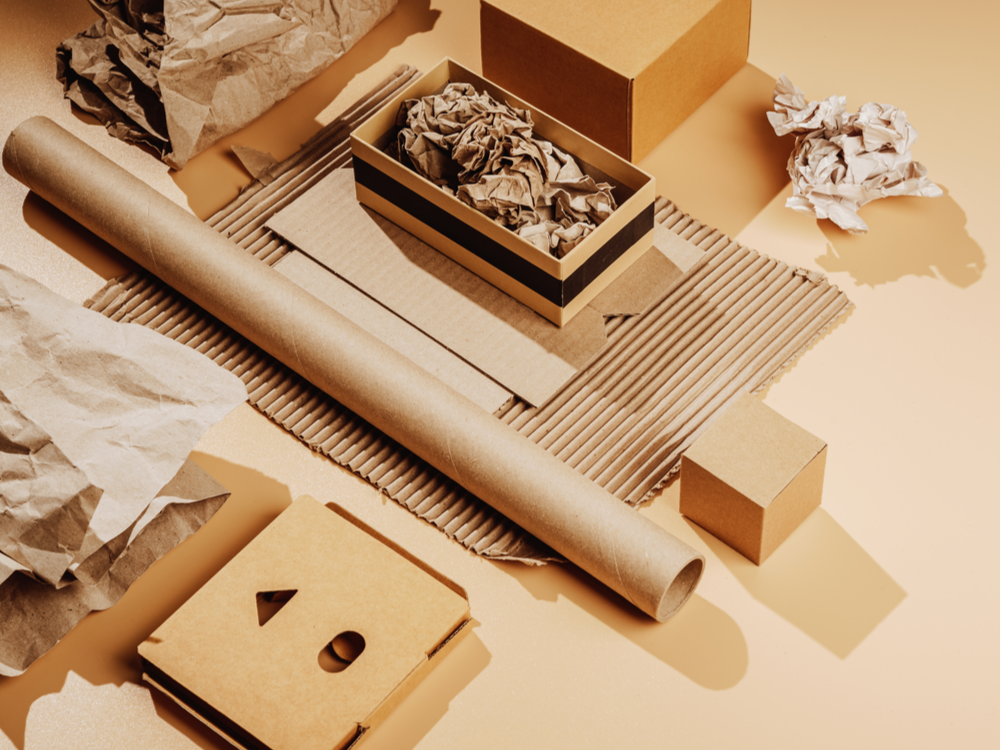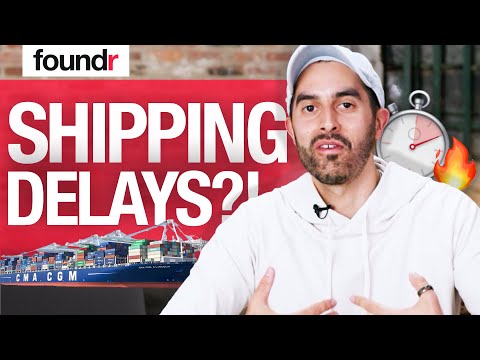We’re living in the golden age of packaging. There is a wider array of options and more consumer demand than at any other time in history. But as with anything else in life, all that glitters isn’t necessarily gold. In fact, some of that glittering you see in the distance is discarded plastics and other packaging materials piling up in your local landfill.
Packaging waste is a global issue. While some of it is recycled, most isn’t due to either lack of effort or lack of adequate facilities.
As the magnitude of ecommerce grows, so will the scale of packaging. To illustrate the growth of what we’re talking about, global ecommerce sales will exceed $6 trillion this year. And ecommerce is making up a bigger piece of the overall retail pie—currently about 22%.
Consider these staggering statistics regarding retail packaging in an increasingly ecommerce-based world:
- 17% of the global waste worldwide each year is paper and cardboard
- 12% of the global waste worldwide each year is plastic, most of it related to packaging
- The amount of plastic waste in our oceans will triple to 29 million metric tons by 2040
- 55% of US consumers are extremely or very concerned about product packaging’s impact on the environment
- 60-70% of consumers are willing to pay more for sustainable packaging
- 36% of consumers are willing to buy more sustainably packaged products if they’re labeled and available
If you care about customers, you should care about sustainable packaging. Because more and more people are waking up to the reality that packaging waste is causing tremendous problems. And research reveals that the majority of consumers aren’t merely “slacktivists” on the issue… they’re willing to pay more for more responsible packaging.
As for the 35% of customers who aren’t willing to pay more for sustainable packaging, they probably don’t have anything against it. They’re just not at a point where they’re willing to support increased prices. So when you can introduce sustainable packaging at a reasonable price, you’ll attract the widest swath of customers possible.
And what about “Mother Earth”? Even the most callous business owner has to admit that garbage patches and microplastics are a concern. And plastic usage shows no sign of abating. As Ian Tiseo explains:
Plastics are found in almost all products today, from electronics and automobiles to medical equipment and consumer goods. These diverse materials have become so ubiquitous in modern life that it is hard to imagine life without them. Global plastic production now averages more than 300 million metric tons per year, which is a staggering increase compared to the 1.5 million metric tons produced in 1950. The quantity of plastic materials produced since 1950 has now surpassed more than nine billion metric tons, with much of this produced in the past decade. However, more than half of all plastics ever produced have ended up as waste. The improper disposal of plastic waste poses a serious issue because some plastic products can take 500 years to decompose.
It’s clear that sustainable packaging solutions are necessary. Are you ready to seek them? Or are you content with the status quo? Just be aware that the status quo could cost you your health and a sizable portion of your customers moving forward.
Sustainable Shipping Packaging Answers Are Desperately Needed
With some environmental dilemmas, there are viable alternatives waiting in the wings. Fossil fuels are undeniably damaging to humans, animals, and plant life. Fortunately, electric vehicles are becoming more common and more impressive. Mercedes has a new vehicle in development that can carry 4 adults 600 miles on a single charge. That means the average driver would only need to charge the battery twice a month. Imagine a vehicle that only needed to be replenished every couple of weeks and still delivered premium performance.
But there isn’t a comparable answer available when it comes to packaging. There are new concepts out there, but for the foreseeable future, packaging will look very much like it does today.
Part of the problem is a matter of scale. There are about 1.2 billion personal vehicles in the world, compared to 7.8 billion people. So the majority of our global population doesn’t own a vehicle. As car ownership grows in the coming years, it can adapt to the new electric technologies.
The extensive use of packaging, on the other hand, makes the level of vehicle ownership seem downright quaint.
“Packaging is ubiquitous,” insists industry researcher David Feber. “It touches almost every person on the planet. It affects things that human beings need to survive: food, healthcare, personal care. All of that is packaged. Today, none of that has a lot of intelligence. But there are real concerns with a lot of those products.”
The logical response to packaging-related concerns is to ramp up our recycling. But that’s not the silver bullet that many observers have hoped it would be. More specifically, our overall recycling efforts are a travesty.
Did you know that most of the recyclable materials collected by various programs around the globe end up in landfills anyway? For example, in the United States, a mere 8% of plastics collected are ultimately recycled. Globally, 6 times as much plastic ends up in the incinerator than being successfully recycled.
Similarly, just 27% of glass collected in the United States is recycled. And even paper and cardboard don’t have a great track record. About 66% is recycled, while the rest is discarded.
You might be a recycling champion who sends every possible item to be recycled in your city, but the system is likely failing you. The majority of things you are sending to facilities is ending up in an incinerator, landfill, or waterway.
Industry analysis from McKinsey & Company reveals the scope of the problem:
Five key trends are emerging that will shape sustainable packaging and related investable themes over the next few years. First, consumers are highly aware of sustainability issues, with their concerns accelerating, but they remain confused. Second, in response to public outcry, sustainability regulation for packaging is now both global and increasingly ambitious, but it has become a complex landscape for corporations to navigate (with accelerating consumer sentiment also making it harder for companies to plan reliably). Third, across regions there are critical gaps around waste collection, recycling systems, and technology, limiting significant changes in the packaging value chain over the near term. Fourth, leading fast-moving consumer goods (FMCG) companies and retailers remain committed to transforming their portfolios, but large-scale market adoption of innovations is slow. Lastly, until further notice, plastics are here to stay, with an emerging green premium on the recycled raw material.
So we’ve got to do the best we can with the fundamentals of what we have. Because the need for packaging isn’t going away. And any innovations will need to be scalable enough to be usable for “almost every person on the planet.”
Current Options for Sustainable Packaging
While we look to the future with optimism and urgency, it’s important to understand the sustainable packaging materials currently available to your business. From better boxes to more environmentally friendly tape, we have extensive options at our disposal (pun intended).
But the best solutions in the world are of little worth if they’re not in the hands of those who need them. And it’s clear that confusion still reigns among consumers, a category that includes business owners as much as customers. As this report from a team of industry experts explains:
Global consumers are increasingly worried about the environment and the impact of packaging leakage. While buyers claim to have high willingness to pay for more sustainable packaging, purchasing choices are still largely driven by other factors (such as brand, quality of products, and economics). For example, US consumers rank overall sustainability relatively low as a buying criterion among end-use factors; they regard price, quality, brand, and convenience as more important. We see a similar pattern for global consumers. Moreover, consumer attitudes are not always scientifically consistent: for example, our global survey finds that consumers rank plastic packaging that is either made from compostable materials or is recyclable as quite sustainable, yet they simultaneously rank plastic containers and bottles made from such recycled materials as among the least sustainable.
Given the difficult and frustrating process of improving shipping, every little innovation should be considered a victory. So let’s review some of the best sustainable packaging options available so that you can identify ways that you can join the movement, make a difference, attract appreciative customers, and hopefully save some money.
Cornstarch-Based Packing Materials
This is a great place to start because it’s one of the easiest forms of sustainable packing materials to implement. We’re all familiar with the Styrofoam peanuts that most businesses use to protect products during shipment. Not only are they messy, but they’re a petroleum-based product that hurts the environment from the moment they’re created to the time when they inevitably end up in a landfill.
These corn-starch alternatives are much less harmful to make and are biodegradable. They often cost less and weigh less than their Styrofoam competitors. Better yet, they’re actually edible. So if you’re ever trapped in your warehouse in the middle of a storm, you could simply open some boxes and enjoy a moderately nutritious meal.
Recycled Packing Materials
Even if you don’t use cornstarch-based packaging peanuts, there are other great options available. For example, corrugated cardboard is made from upcycled boxes and offers great protection to your products. Once its journey is complete, it can be reused or will simply decompose.
Air pillows are another excellent choice. They are made from recycled materials and can be reused for multiple trips and then recycled. Most importantly, they use air to fill most of the space, which cuts down on the materials required. And they’re biodegradable, so they leave this Earth gracefully when their shipping days have reached an end.
Sustainable Ink
Ink is another ubiquitous product that we rarely think about. But it’s created using petroleum, just like Styrofoam. And when it’s plastered onto your packaging it can sometimes make it so the exterior can no longer be composted.
There aren’t any edible cornstarch inks out there, but vegetable-based options are growing in popularity. Aside from environmental benefits, these new inks deliver more vibrancy than standard ink. The result is a better-looking visual that requires less ink, which can save you money.
Cutting costs while also doing your part to save the Earth is what we like to call an ultimate win-win.
Water-Activated Tape
Packing tape needs to be tough enough to withstand the drops, tosses, and smashes that often befall packages as they make their way from “Point A” to “Point B.” For this reason, standard packing tape is made with plastic. This component is good for durability, but bad for everything else (remember that plastic can take up to 500 years to decompose).
Eco-friendly tape options such as water-activated tape boast comparable strength to plastic but are biodegradable so they won’t linger for hundreds of years. These new tapes also look amazing, allowing you to customize the look and extend your brand by making the tape a design element as much as a security element.
Recycled Cardboard
There’s no getting around the fact that cardboard is durable and inexpensive. So there are lots of scenarios where it will be the best option available. You can dramatically increase the sustainability of your decision by choosing post-consumer recycled products.
Another prime option is to seek out cardboard and paper products that are sustainably sourced (watch for the Forest Stewardship Council certification). These packaging materials come from forests that are managed in a way that promotes balance for all. One survey revealed that 82% of consumers look for the FSC label and their buying decisions are influenced by it.
Mushroom Packaging
We’ll conclude with this exciting evolution in sustainable packaging materials. As its name suggests, mushroom packaging is largely made from fungus sprouts. Other agricultural residue is added for strength, and the conglomerate encases the product. It is extremely efficient because the packaging forms to the product, eliminating wasted space. On top of that, it’s cost-effective.
Mushroom packaging isn’t available yet for wide-scale use, but that day might not be far off. IKEA is already using it for some of their product shipping, as is Dell. As the techniques for mushroom packaging improve, it’ll be accessible to a broader range of companies. This is exciting news because there are few options more eco-friendly to create and effortless to biodegrade.
New Elements of Sustainable Packaging Solutions
Even as ecommerce takes a more prominent role in global retail, most packaging is still geared toward the brick-and-mortar system. You probably notice this when you receive an oversized package containing an undersized product from an online retailer. The old system hasn’t put much emphasis on efficiency, so it’s not unusual to see this kind of wasteful shipping.
But running an effective ecommerce operation with the volume of shipping that entails will always require efficiency. We must find packaging options that weigh less, pack smaller, and make better use of their volume. The results will be as noticeable in our landfills and oceans as they will be on the bottom line.
Not only will our packaging of the future need to be better for business and the environment, but it will also need to be better for people. Our post-pandemic world has shone a spotlight on the need for hygiene. The less hospitable to viruses we can make packaging surfaces, the better off we’ll all be.
Do you have ideas for how to achieve more efficient, more environmentally friendly, and more hygienic packaging? If so, you can help us solve some of today’s problems. If not, you still have valuable insights that can help bring clarity to the issue and spur positive change on a smaller scale.
The point is that you should feel free to speak up whenever you have ideas. Talk to your supply chain about concerns or potential ways to make things better. Your suppliers and clients will often welcome your perspective, like any idea that helps you will likely benefit them as well.
And be sure to communicate with your customers, letting them know how you’re improving and where you hope to go in the future. By notifying them of your biodegradable packaging, you’ll engender goodwill and make it more likely that they’ll dispose of your packaging in the most appropriate way.
By making your voice heard, you make a positive impact on this crucial conversation. Who knows? Maybe one of your ideas helps to improve the way packaging is handled in your supply chain. As more entrepreneurs get involved, the collective wisdom and energy will inevitably lead to broader changes that benefit everyone.
Speaking of collective wisdom, our library of free business courses features some of the most accomplished entrepreneurs in the game. Check out the Infinite Income on Amazon course to learn more about delivering excellence and building customer loyalty. It’s the first time that Melisa Vong has shared her step-by-step system that’s responsible for more than $20,000,000 in Amazon product sales.
The post It’s Time to Get Serious about Sustainable Packaging appeared first on Foundr.




